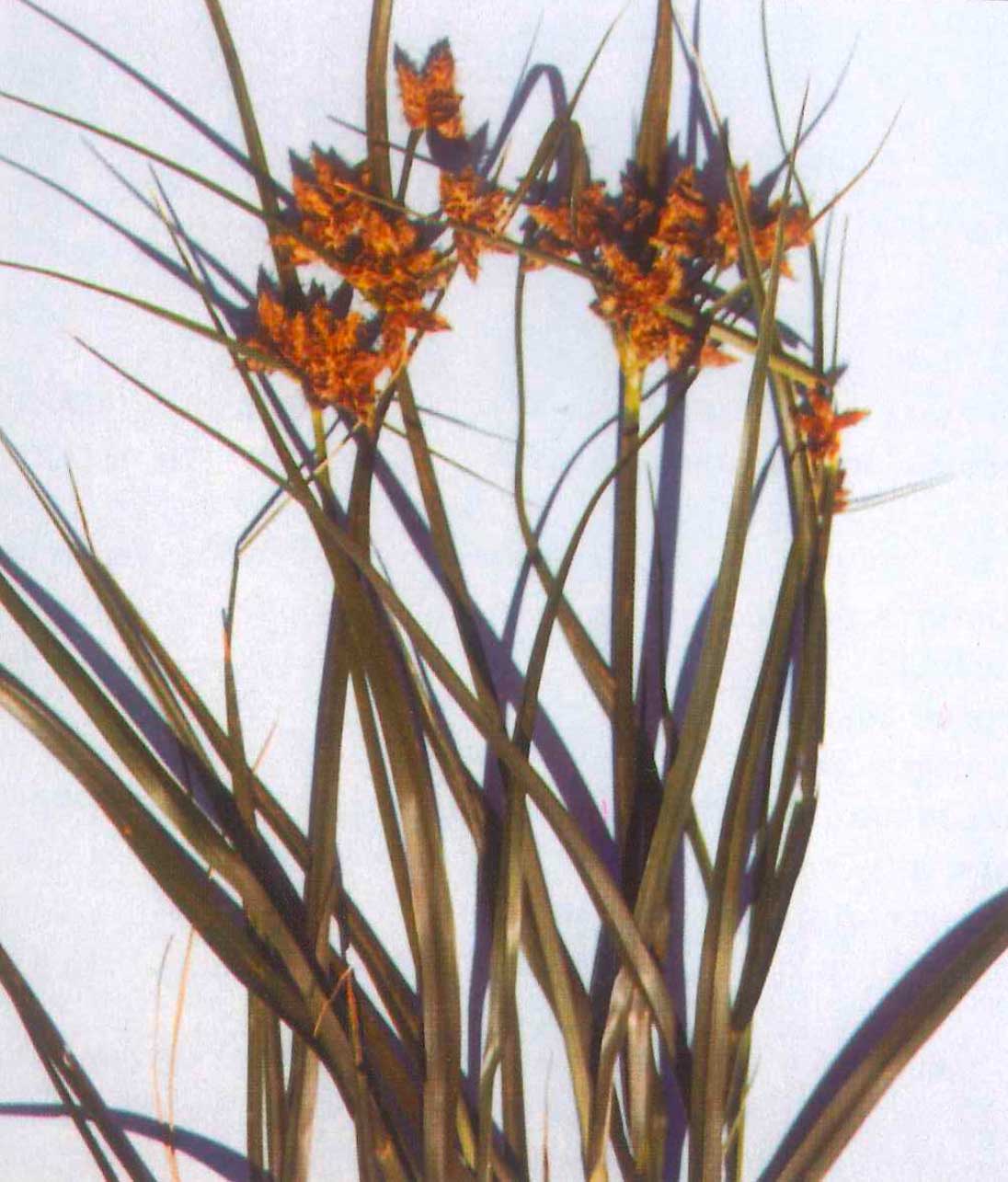Alkali Bulrush or Nutgrass
(Scirpus maritimus)

Status: Native
Habitat: Wetland
Description: Alkali Bulrush is a stout, perennial herb that grows from long horizontal, underground stems. It generally has enlarged, fleshy, underground stems that are less than 0.75 of an inch wide. The aerial stems are upright and triangular with sharp angles and smooth sides, and are approximately 0.25 of an inch wide and 2 to 36 inches tall. The leaves are evenly distributed along the stem and approximately 0.25 of an inch wide. The seed head usually has 4 to many spikelets, which are 0.5 to 1 inch long and 0.25 of an inch wide usually found in one dense cluster at the top of the stem. The fruit is a smooth, shiny, dark brown nutlet that is more or less compressed, but is slightly convex in appearance. This plant is commonly found in marshes throughout California at elevations less than 8100 feet.
Growth Requirements: Alkali Bulrush is a salt tolerant species and will survive in an environment with a specific conductivity up to a high of 42 mS/cm. Seven to eight months of submergence provide optimum growing conditions. Ponds where Alkali Bulrush is the target species should be drawn down to a mud flat in April or May. Leach cycles before this period are recommended. Low salt conditions are essential for growth during seed-head formation, normally from mid-April to mid-May.
Alkali Bulrush is able to tolerate large seasonal salinity changes, but recommended spring root zone salinities range from 11 to 22 mS/cm (7-14 ppt). Low spring salinities are most important for the successful germination of Alkali Bulrush.

